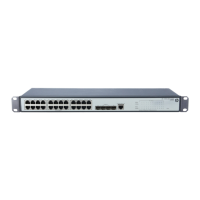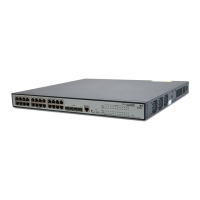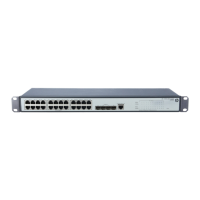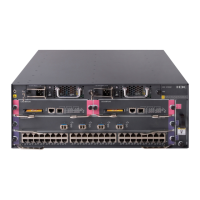174
Designated bridge ID: Comprises the priority and MAC address of the designated bridge.
Designated port ID: Comprises the port priority and global port number.
Message age: age of the configuration BPDU while it propagates in the network.
Max age: The maximum age of the configuration BPDU.
Hello time: The transmission interval of the configuration BPDU.
Forward delay: The delay before a port transitions to the forwarding state.
NOTE:
For simplicity, the descriptions and examples in this document involve only the following fields in the
configuration BPDUs:
Root bridge ID (represented by device priority)
Root path cost
Designated bridge ID (represented by device priority)
Designated port ID (represented by port name)
Calculation process of the STP algorithm
Initial state
Upon initialization of a device, each port generates a BPDU with itself as the root bridge, in which the
root path cost is 0, designated bridge ID is the device ID, and the designated port is the local port.
Selection of the optimum configuration BPDU
Each device sends out its configuration BPDU and receives configuration BPDUs from other devices.
The process of selecting the optimum configuration BPDU is as follows:
Table 69 Selection of the optimum configuration BPDU
Step Actions
1
Upon receiving a configuration BPDU on a port, the device performs the following:
If the received configuration BPDU has a lower priority than that of the configuration
BPDU generated by the port, the device discards the received configuration BPDU and
does not process the configuration BPDU of this port.
If the received configuration BPDU has a higher priority than that of the configuration
BPDU generated by the port, the device replaces the content of the configuration BPDU
generated by the port with the content of the received configuration BPDU.
2
The device compares the configuration BPDUs of all the ports and chooses the optimum
configuration BPDU.
NOTE:
The following are the principles of configuration BPDU comparison:
The configuration BPDU with the lowest root bridge ID has the highest priority.
If confi

